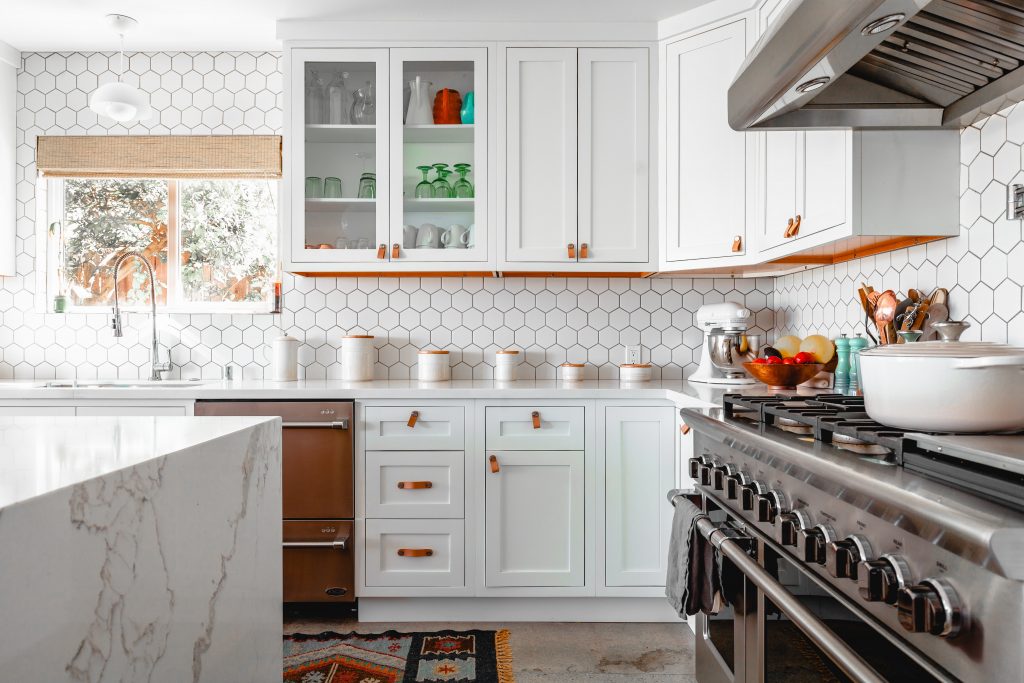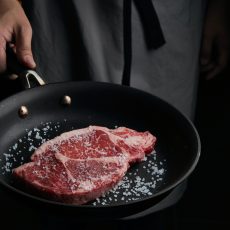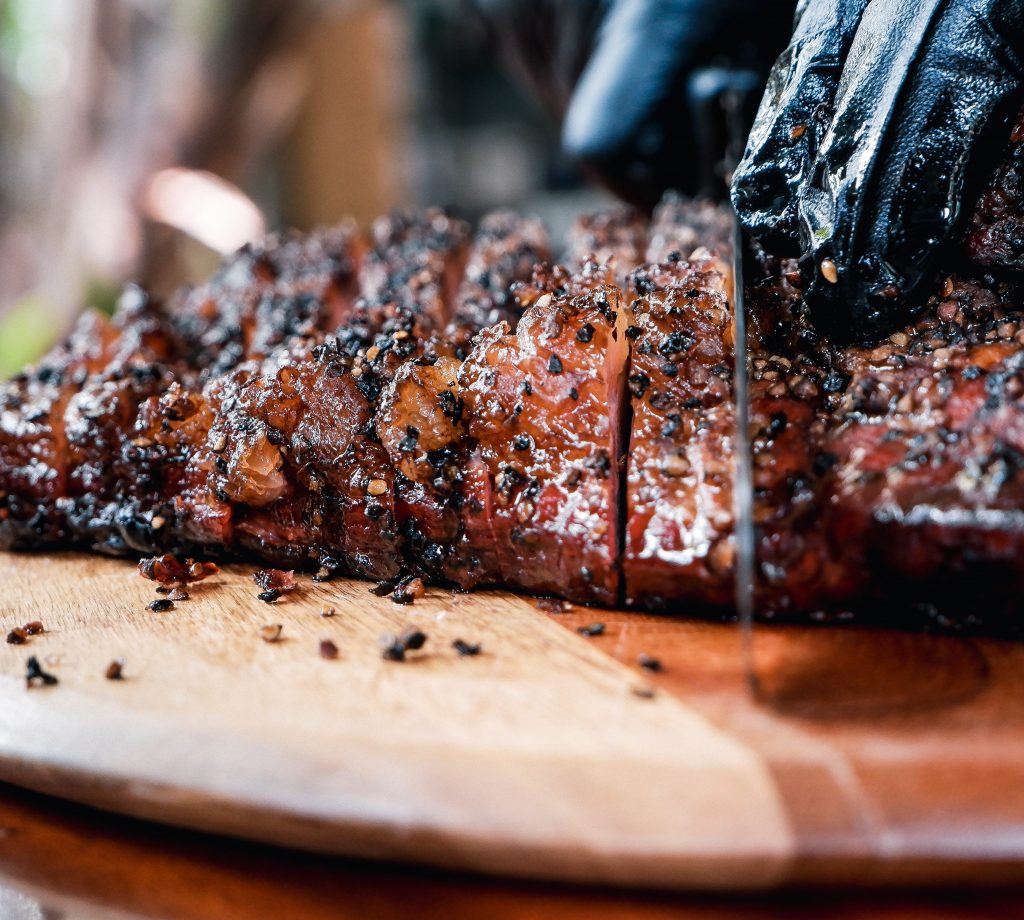Eating a tender, juicy steak is no fun if you don’t have the best steak knife to cut it into pieces. Those that have tried to use a kitchen knife to cut a steak know true frustration and struggle. A steak is too dense to cut through with a standard knife, that’s why knife manufacturers produce steak knives.
The best steak knife has a mix of function and style. It is built for the task with a sturdy handle and a sharp blade. You could essentially use it for all your daily cutting needs.
When it comes to buying the best steak knife for yourself, personal preference plays a vital role especially when it comes to the type of blade. The two main options are serrated and non-serrated blades. Let’s look at both to help you understand the difference and pick which of the two would be ideal for you.

Serrated steak knife
The blades of a serrated steak knife are jagged but still razor-sharp. They are more difficult to sharpen due to the intricate edges. The blade allows users to cut through meat with ease as the edges rip through the meat, slicing it. The force at which it rips through the meat results in a lot of the steak’s juice spilling out onto the plate. Which many may consider as a shortcoming of the knife.
You can also use the knife to cut fruits, vegetables, bread, and other food items. The best part about serrated steak knives is that the blade rarely goes blunt. The edges on the blade remain as they are, so you don’t need to sharpen them from time to time as you do with non-serrated knives.
Non-serrated steak knife
A non-serrated steak knife has a straight edge which allows it to cut steaks smoothly. It doesn’t rip through the meat like a serrated knife. Instead, it effortlessly slices it, which keeps most of the juice in the meat, so you can truly enjoy your steak.
Non-serrated knives typically require more effort when it comes to cutting well-done or a thick pieces of meat. The blade lacks the jagged edges which easily rip through the meat. The knife also requires sharpening from time to time, especially if you don’t use it often. But the sharpening process is easy, especially if you have an electric knife sharpener.
What else to consider when looking for the best steak knife
- Material: The durability of the blade depends on the material it is made from. Most good steak knives are made of stainless steel making them resistant to rust. The material is sharp, rigid, and durable. You can also find steak knives with ceramic blades. While the blade is resistant to rust it may chip after extensive use.
- Handle: You need a handle that is comfortable to hold and provides a proper grip. There is a range of materials used for steak knives’ handles from wood, and stainless steel, to plastic. Test to see which one you are most comfortable using and keep in mind that wood and steel are more durable than plastic handles.
- Weight and balance: The best steak knife is well-balanced and feels good. The length of the blade and handle are similar, to give it proper balance, making it easy to use. Plastic handle and ceramic blade knives are generally lighter than stainless steel options.
- Maintenance: Ease of cleaning and the durability of the blade’s sharpness need to be considered when it comes to care. The best steak knife should be dishwasher safe and easy to maintain and doesn’t need sharpening too often. Remember that serrated knives are harder to sharpen, and you can’t just sharpen them with an electric knife sharpener.
- Budget: The final thing you need to consider when buying the best steak knife for yourself is your budget. You can find a good steak knife within any budget nowadays. So, if you have a limited budget make sure you shop around until you find what you want within your budget.

Buying The Right Steak Knife For You
Every household should have steak knives. The last thing you want is to wrestle with your steak during dinner with a standard kitchen knife. The best steak knife may be used to cut anything. We are certain that it will be your go-to knife for all your cutting needs in the kitchen. Just make sure you take into account the type of blade, material, handle, and budget when you pick one out for yourself.

































